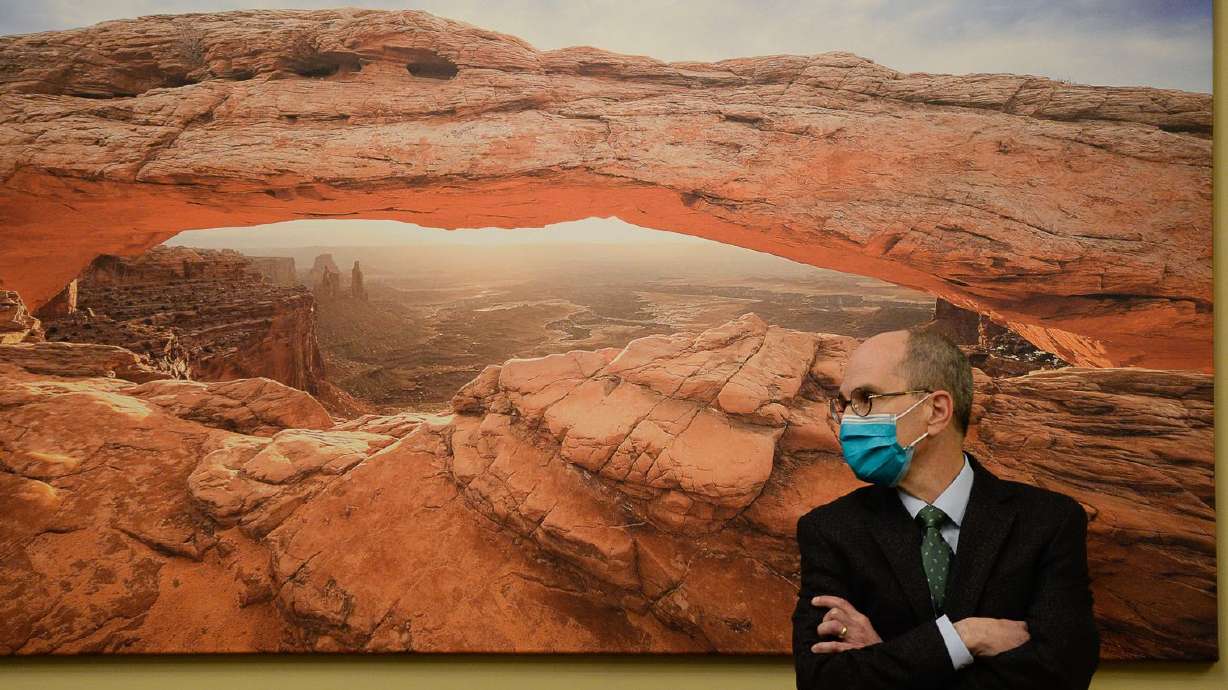Estimated read time: 4-5 minutes
This archived news story is available only for your personal, non-commercial use. Information in the story may be outdated or superseded by additional information. Reading or replaying the story in its archived form does not constitute a republication of the story.
SALT LAKE CITY — As COVID-19 cases surge in Utah, the governor’s office appears to be winding down a group created to help guide the state’s response to the coronavirus pandemic.
“After consultation with Gov. Herbert and senior staff within the executive branch, we will be transitioning our COVID-19 Community Task Force meeting to occur on an as-needed basis,” according to a June 15 memo Lt. Gov. Spencer Cox’s executive assistant sent to task force members.
Gov. Gary Herbert tapped Cox to lead the 12-member group made up of public safety, health and community leaders and lawmakers. It met several times a week at first but was down to about once a week.
“The day-to-day decisions of the state’s response to the pandemic are now, and have been for a number of months, under the direction of the Unified Command. The task force is not a policymaking body for the state, but an advising one,” according to a statement from the governor’s office Tuesday.
Utah Public Safety Commissioner Jess Anderson and retired Maj. Gen. Jefferson Burton, acting director of the Utah Department of Health, oversee the Unified Command. Both are members of the COVID-19 task force.
At least one member, Rep. Paul Ray, R-Clearfield, said he doesn’t understand why the task force is being put on the shelf. He said he really thought there was a role it could play at a time when coronavirus cases are spiking in the state.
Herbert and Cox intend to consult with individual members “when they deem it necessary” and call meetings when prudent or warranted, according to the memo obtained by KSL.
“The governor and (lieutenant) governor will continue to rely on you in your capacity as members of this task force, and we will reach with any salient updates or meeting requests as we move forward,” the memo says.
Related:
Herbert created the task force in early March as the state prepared for a possible coronavirus outbreak. It plays an advisory role in Utah’s overall strategy, which has evolved over time to combat the virus.
“In the early stages of the pandemic, the task force was relied upon as a nimble body to both give counsel to the governor and lieutenant governor as well as to carry and amplify important messages to the communities of interest in our state,” the statement says.
Ray said he thought the group would be used more to help shape policy but was mostly a sounding board for the governor.
“We didn’t vote on a lot of things,” he said. “We were just told what was going to happen.”
In a text message to Justin Harding, Herbert’s chief of staff, Ray asked whether the task force should have been part of the discussion on extending the yellow phase to June 26. The governor moved most of the state to yellow or low risk on June 12.
“Fair question, Paul. That has not been the role of the task force previously and we don’t envision the task force playing a role in that sphere going forward,” Harding replied.
“Among the local departments of health, the Utah Department of Health, the newly formed commission, and the elected leadership of the various entities, we have a solid, data-informed approach that has yielded strong recommendations and actions.”
Ray has criticized the governor for closing public schools and for what he saw as moving too quickly to shut down the state’s economy.
Task force members “continue to be at the forefront” of working to slow the virus in their specialties and as advisers to the governor, according to the statement.
“Additionally, critical work is being done by the subgroups of the task force in the areas of economic response, housing, outreach to displaced and marginalized populations, updating hospital crisis standards of care and development of industry standards for employers and employees,” the statement says.
Members of the task force also include Dr. Angela Dunn, state epidemiologist; Kris Hamlet, Division of Emergency Management; Sydnee Dickson, Utah State Board of Education, Salt Lake Chamber President Derek Miller; Mikelle Moore, Intermountain Healthcare; Dr. Brian Shiozawa, University of Utah Health; Pamela Atkinson, community advocate; Marty Stephens, The Church of Jesus Christ of Latter-day Saints director of government and community relations; Senate Majority Assistant Whip Ann Millner, D-Ogden, and Ray.










